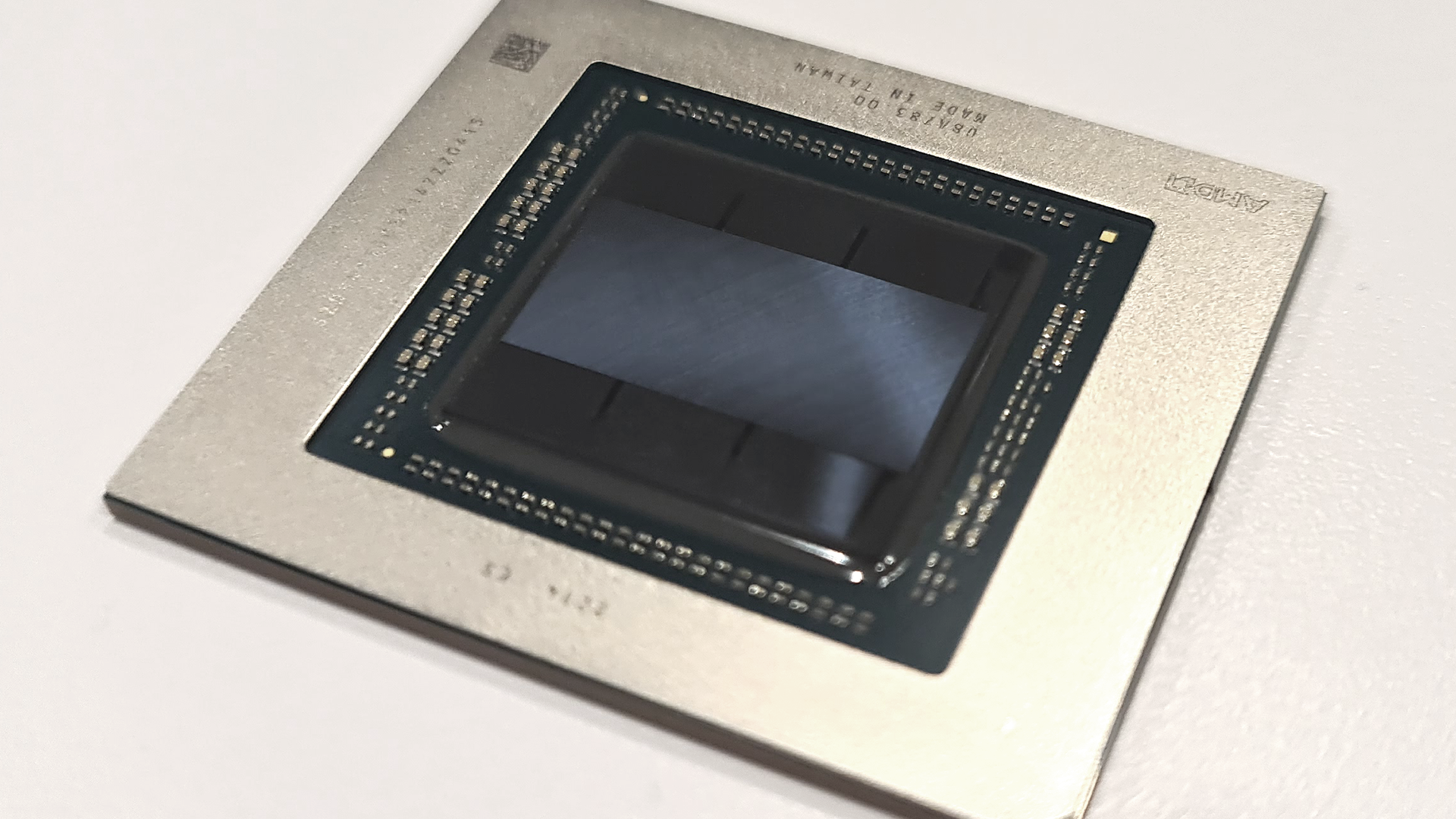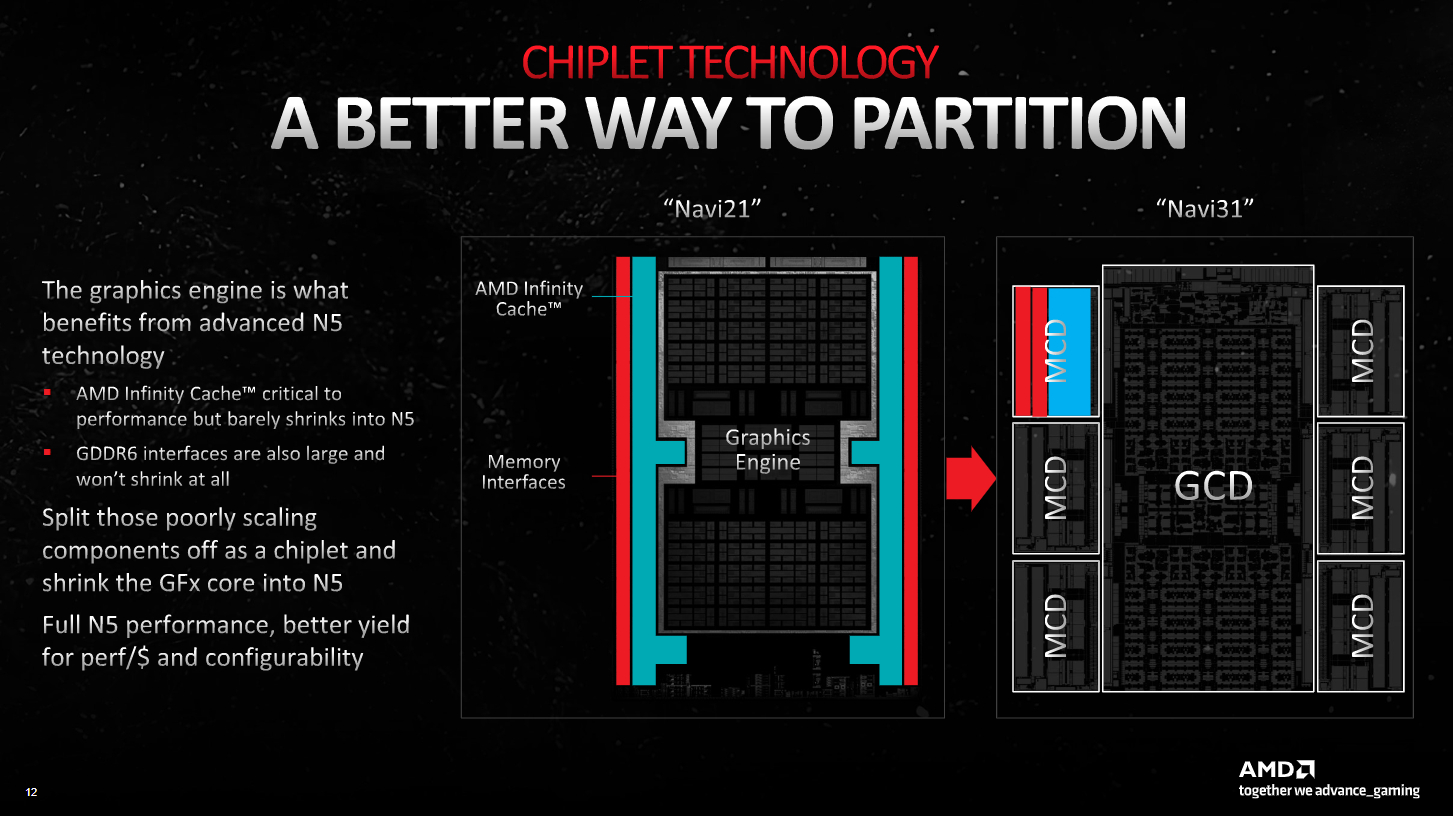Tiny spots on AMD's RDNA 3 GPU hint at massive cache potential
A sign of things to come or a feature left on the cutting room floor in production?

Close-up images of AMD's RX 7900 XT have revealed what appear to be connection points used with 3D chip stacking technologies. Engineer Tom Wassick has zoomed in on the memory chiplets within the Navi 31 GPU, known as MCDs, and what he's found are tiny "spots" that appear similar to those on AMD's V-Cache CPUs.
According to Wassick (via Tom's Hardware), who has viewed AMD's latest GPU with an infrared camera, these spots could show a latent ability in the RDNA 3 GPU that would allow AMD to stack another chip on top of the MCD.
What else can you see? A linear array of "spots" that look remarkably like the keep out zones on X3D, and that are on the same 17-18 um pitch. Could they be considering stacked MCD functionality (or maybe they're something else)?January 27, 2023
It was rumoured back in the development process for the Navi 31 GPU that AMD would implement stacked MCDs, but reportedly decided against it, at least for the first chips. There have been rumours of a Navi 31 refresh later in the year, but equally contrasting rumours claiming such a refresh has been canned. Having the potential for drastically increasing the available cache for the RX 7900-series cards would have been a powerful tool to have in the AMD arsenal for any potential later update.
These connection points could then either be legacy connections from older plans for the GPU memory dies, or paving the way for a future upgrade. How that could take shape, if it ever does, remains a mystery, but in theory a GPU could benefit from having more memory close at hand as much as a CPU.
AMD has found extra performance from bumping up the cache capacity on both its latest GPUs and CPUs. The Infinity Cache introduced with the Ryzen 6000-series graphics cards helped increase its available memory bandwidth, and the first processor with 3D V-Cache technology, the Ryzen 7 5800X3D, runs significantly faster than the Ryzen 7 5800X in cache-heavy workloads (i.e. gaming). That same sort of performance uplift is also expected for the upcoming Ryzen 7000-series V-Cache chips, which are preparing for battle against Intel's Raptor Lake processors sometime in February. While today's Ryzen 7000-series tends to lose that battle, the 3D V-Cache chips are expected to be much more competitive, maybe even topping the performance charts.
Nvidia has also followed AMD's lead, massively increasing the L2 cache on its Ada Lovelace-based graphics cards of the RTX 40-series. No doubt AMD will be looking to other implementations of the technology to once again maximise performance itself.


Best CPU for gaming: The top chips from Intel and AMD
Best gaming motherboard: The right boards
Best graphics card: Your perfect pixel-pusher awaits
Best SSD for gaming: Get into the game ahead of the rest
Both the RX 7900 XT and RX 7900 XTX come with a chiplet-based GPU, and that will play a key role if AMD does look to bolster cache amounts on its GPU with chip stacking tech.
The biggest gaming news, reviews and hardware deals
Keep up to date with the most important stories and the best deals, as picked by the PC Gamer team.
The Navi 31 GPU is split into two component parts: the GCD and MCD. There are six MCDs on the XTX and five on the XT, though it appears the same as the XTX due to a dummy block of silicon replacing the sixth MCD. In theory, AMD could scale up the memory chiplet count with 3D V-Cache, all without expanding the GPU's overall footprint.
Alas, this is only a dream, though the telltale signs of chip-stacking capabilities might hint at what's to come from the red team. For now, we're hoping for a swift release of some cheaper graphics cards out of the RDNA 3 architecture, but keep your eyes on the horizon for a chiplet-based, 3D-stacked behemoth. We can only hope that's something the red team's considering, and not something it's already canned.

Jacob earned his first byline writing for his own tech blog. From there, he graduated to professionally breaking things as hardware writer at PCGamesN, and would go on to run the team as hardware editor. He joined PC Gamer's top staff as senior hardware editor before becoming managing editor of the hardware team, and you'll now find him reporting on the latest developments in the technology and gaming industries and testing the newest PC components.

